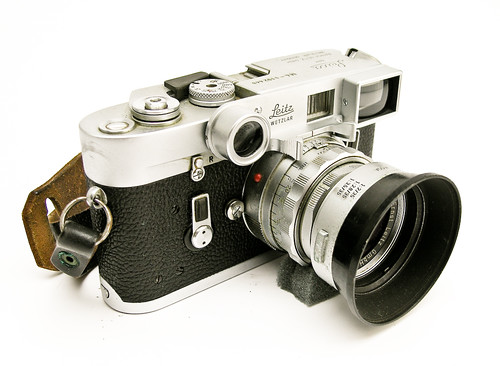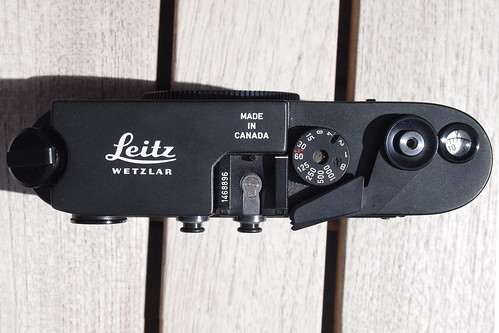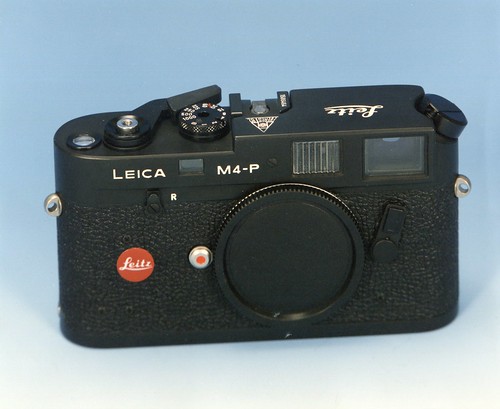Leica M4

|
| Photo of Leica M4 with Summicron-M 50mm/2 Dual Range equipped for close-up use. image by Christopher Robin Roberts |
The Leica M4 was introduced in 1967, replacing the 1954 Leica M3 with a number of improvements; particularly much improved film handling and viewfinder bright lines for wide angle lenses.
Like the M3, the M4 is an all mechanical manual exposure rangefinder camera without a built in exposure meter. A clip on coupled exposure meter was available as an accessory. Also available was the 'Visoflex' reflex head, which turned the camera into an SLR. Visoflex lenses have a different mount and cannot be used except with the Visoflex.
The M4 was Leica's last camera produced largely with hand assembly.
Leica M4-2
| ||
|
Following the disastrous M5, the M4 was reintroduced in 1978 as the M4-2 manufactured in Canada, with only detail differences. Manufacture was simplified and largely mechanised, reducing the very high cost of earlier production.
Leica M4-P
|
Built from 1980 to 1986, with serial numbers from 1543351 to 1692950, successor to the M4-2 and likewise made in Canada. The main difference was a six-position rangefinder lever that allowed use of the 28/35/50/75/90/135 lenses by sharing the following frame combinations: 35/135mm, 50/75mm, and 28/90mm. The 28mm and 75mm frames were added for these newer lenses. The M4-P also has the .72 magnification frames found in the M6 and available for the M7.
Like all previous M cameras, the M4-P does not have a built in light meter. A motor winder, powered by AA batteries, was available, providing shooting up to 3 frames per second. Most M4-Ps were finished in black chrome, while some silver-chrome units were also available. M6 started production in 1984, overlapping production of the M4-P, and later M4-Ps shared the same rangefinder as the M6.
Links
- Leica M4-2 at Sylvain Halgand's www.collection-appareils.fr
- Leica M-series guide at Stephen Gandy's CameraQuest


